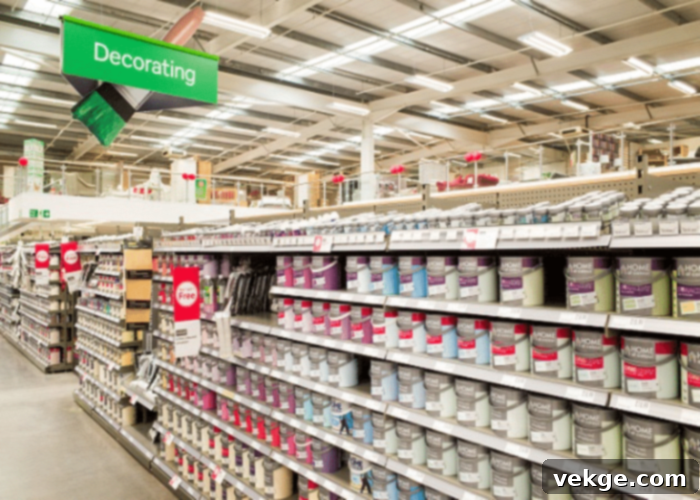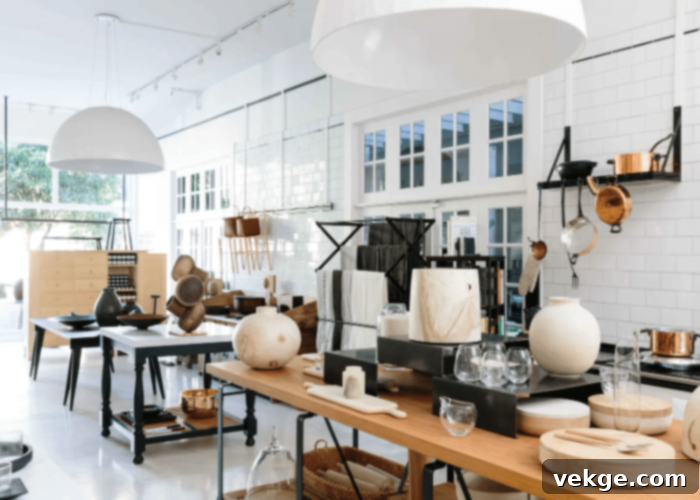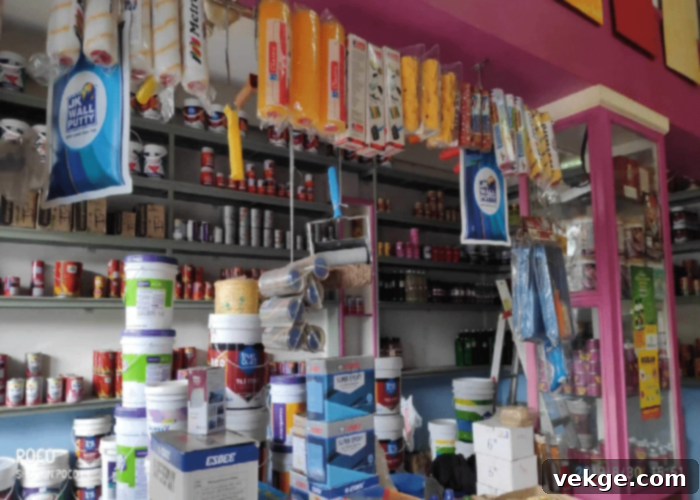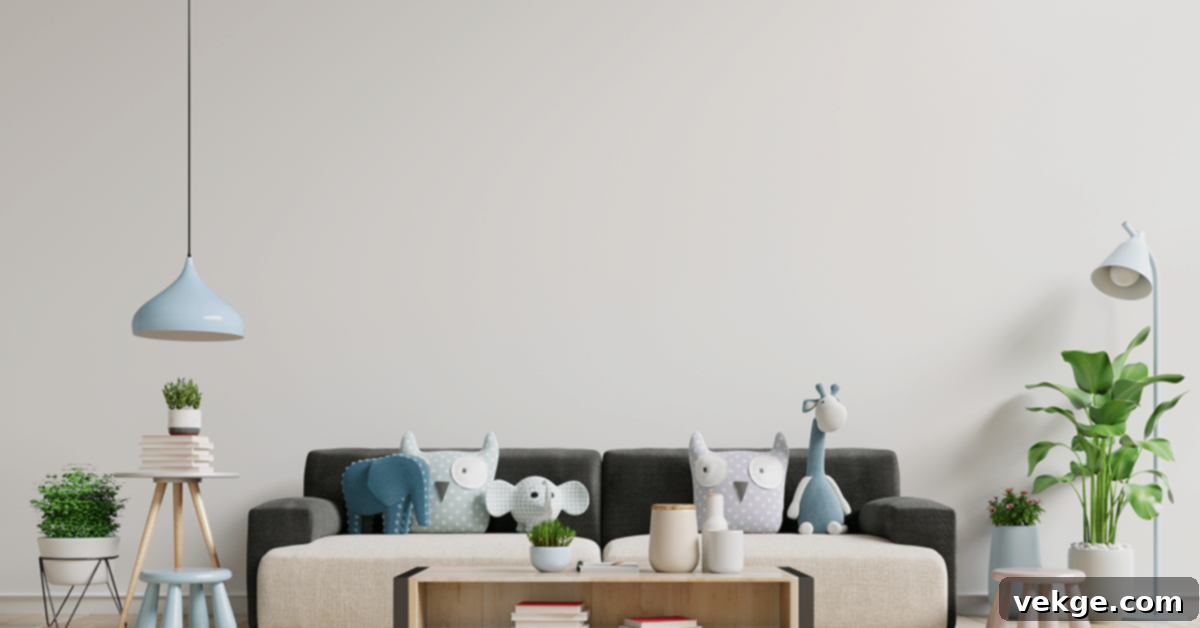The Ultimate Guide to Finding and Buying the Perfect Off-White Paint Colors for Your Home
A thoughtfully chosen paint color possesses the remarkable ability to transform and elevate any living space. The subtle interplay of hues can instantly set a mood, evoke specific emotions, and infuse an atmosphere with vibrant life or serene calm. Among the vast spectrum of choices, off-white paint colors stand out as a timeless and highly versatile option. These nuanced shades offer the unique quality of striking a perfect balance between naturality and warmth, making them an enduring favorite for homeowners and designers alike. However, for many new homeowners or those less experienced with color selection, the process of finding and purchasing these ideal off-white paints can often feel overwhelming and confusing.
Understanding this common challenge, we’ve crafted this comprehensive guide to demystify the process. Our aim is to equip you with the knowledge and resources needed to confidently navigate the various avenues for purchasing off-white paint colors, ensuring you find the perfect shade to enhance your home’s aesthetic.
Where to Buy Off-White Paint Colors: Your Essential Retailer Guide
If you’re looking to invest in the timeless elegance of off-white paint colors, knowing where to start can make all the difference. Below, we outline the most reliable and convenient places where you can easily find not only a wide array of off-white shades but also most other paint colors you might need for your home renovation projects.
1. Home Improvement Stores: Your Go-To for Variety and Convenience

For many, home improvement stores are the first and most accessible stop on their paint buying journey. These large retail chains, such as The Home Depot, Lowe’s, and Menards, are essentially one-stop shops for all your renovation and home improvement needs. Just as a grocery store has dedicated aisles for different food categories, these stores feature expansive paint departments. Here, you’ll find a vast selection of paint brands, finishes, and, of course, countless off-white shades. The sheer volume allows for easy comparison of different options side-by-side. Additionally, these stores often stock all the necessary painting supplies, from brushes and rollers to drop cloths and primers, making it incredibly convenient to get everything you need in one trip. While expert advice might be less specialized than a dedicated paint store, staff are generally available to assist with basic questions and color mixing.
2. Paint Specialty Stores: Expertise and Premium Quality

When you’re seeking a more specialized experience, paint specialty stores like Sherwin-Williams or Benjamin Moore are unparalleled. These establishments are exclusively dedicated to paints, coatings, and related products, often stocking premium quality paints from renowned brands. Here, the focus is on a comprehensive range of colors, including an extensive selection of off-whites with various undertones, as well as different paint types and finishes tailored for specific applications. The true advantage of these stores lies in their dedicated and highly knowledgeable staff. Unlike general home improvement stores, the experts at paint specialty stores are trained color consultants and painting professionals. They can offer personalized guidance on color theory, undertones, finishes, and even provide professional color matching services, ensuring you achieve the exact shade and quality you desire for your project. This level of expert consultation is invaluable, especially when working with subtle colors like off-whites.
3. Interior Design Stores: Curated Selections for a Polished Aesthetic

Interior design stores offer a unique and often more luxurious approach to purchasing paint. These establishments are meticulously curated to provide a holistic vision for home aesthetics, stocking everything from designer furniture and bespoke wallpaper to unique home decor accessories, fabrics, textiles, and, of course, a carefully selected range of paints. When it comes to off-white paint colors, interior design stores typically offer a refined collection of high-end brands and designer shades that are specifically chosen for their sophisticated appeal and ability to complement various design schemes. Shopping here provides a distinct advantage: you can see how paint colors integrate with other elements of interior design in a cohesive setting. The staff, often interior designers themselves, can provide expert advice on how an off-white shade will interact with your existing decor, lighting, and overall aesthetic goals, helping you make a choice that contributes to a truly polished and harmonious living space.
4. Online Retailers: Convenience and Broad Selection at Your Fingertips

For the busy individual or the homebody, online retailers like Amazon, Wayfair, or even the online portals of large home improvement stores offer unparalleled convenience. You can browse an enormous selection of off-white paint colors from various brands, compare prices, and have your chosen paint delivered directly to your doorstep without ever leaving your home. This broad digital marketplace often means you’ll find brands and shades that might not be available in local physical stores. However, buying paint online comes with a significant challenge: the inability to physically see and test the color. Digital screens can notoriously misrepresent actual paint colors due to variations in monitor settings. To mitigate this risk, it’s crucial to always order sample swatches or small sample pots before committing to a larger purchase. Many online retailers offer these samples, and it’s a small investment that can prevent a costly mistake. Always check the return policy before purchasing, ensuring you have the option to return if the color doesn’t suit your space once applied.
5. Official Brand Websites: Direct Access to Manufacturers’ Collections

Many leading paint manufacturers, such as Benjamin Moore, Sherwin-Williams, Farrow & Ball, and Clare, operate their own official brand websites where you can directly purchase their full range of products. This direct-to-consumer approach offers several distinct advantages. You gain access to the most accurate and detailed information about each paint color, including specific undertones, light reflective values (LRVs), and recommended complementary colors. Brand websites are often the first place to showcase new collections, exclusive shades, and advanced paint technologies. They typically provide high-quality digital swatches and often have robust online tools like color visualizers to help you envision the paint in your home. Furthermore, buying directly ensures you’re getting authentic products and often allows you to take advantage of special promotions or loyalty programs. Just like with general online retailers, the caveat here is the importance of testing samples. While the information is precise, how a color truly appears in your unique lighting conditions is paramount. Always order physical samples to confirm the perfect match before committing to gallons.
6. Local Shops: Community Charm and Unique Finds

Don’t overlook the charm and personalized service offered by local paint shops or independent hardware stores. These establishments, varying in size from small boutique stores to larger specialized outlets, are often deeply embedded within their communities. They may not have the vast inventory of a national chain, but they frequently offer a carefully curated selection of paints, sometimes including niche brands, artisanal paints, or eco-friendly options that you won’t find elsewhere. When it comes to off-white paint colors, a local shop might carry unique shades with distinct undertones that perfectly match a specific regional aesthetic or historical style. The biggest advantage of local shops is the highly personalized customer service. Owners and staff often have extensive local knowledge, understanding the types of homes and lighting prevalent in the area. They can provide tailored recommendations, offer practical advice, and even mix custom colors with a level of care and attention that larger stores might not replicate. Supporting these local businesses also contributes to the vitality of your community.
Essential Tips for Choosing and Buying the Perfect Off-White Paint
Beyond knowing where to buy, making the right choice for your off-white paint color requires a thoughtful approach. Here are some crucial tips to ensure your selection perfectly complements your space:
- Understand Undertones: Off-whites are far from simple white. They carry subtle undertones of yellow, pink, blue, green, or gray. These undertones are critical because they dictate how the color will appear in your home and how it will harmonize with your existing decor and lighting. A creamy off-white with yellow undertones creates warmth, while one with gray or blue undertones can feel cooler and more contemporary.
- Always Get Samples: This cannot be stressed enough. Digital swatches and even paint chips in a store can be misleading. Purchase sample pots of your top two or three off-white contenders. Paint large swatches (at least 1’x1′) on different walls in the room you plan to paint. Observe these samples at various times of day, under different lighting conditions (natural light, artificial light, morning, afternoon, evening). This is the only reliable way to see how the color truly interacts with your environment.
- Consider Your Lighting: Natural and artificial light sources profoundly impact how paint colors are perceived. Rooms with abundant natural light might handle a warmer off-white, while north-facing rooms with cooler light might benefit from an off-white with a slight yellow or pink undertone to counteract the cool cast. Similarly, the Kelvin temperature of your light bulbs (warm white vs. cool white) will influence the paint’s appearance.
- Harmonize with Existing Elements: Think about your furniture, flooring, window treatments, and any artwork. Your chosen off-white should complement, not clash with, these permanent or semi-permanent fixtures. If you have warm wood tones, a warm off-white might be ideal. If your decor is more monochromatic or cool-toned, a cooler off-white could be a better fit.
- Calculate Paint Quantity Accurately: Before buying, accurately measure your room dimensions (length, width, height) to estimate the wall surface area. Most paint calculators (available online or in stores) will help you determine how many gallons you’ll need based on the number of coats. It’s always better to buy slightly more than you think you’ll need to avoid running out mid-project or dealing with dye-lot variations if you have to buy more later.
- Read Reviews and Seek Inspiration: Look at real-life examples of off-white paints in homes. Pinterest, Instagram, and design blogs are excellent resources for visual inspiration. Pay attention to which off-white shades are frequently praised and examine photos to see how they look in different settings. Reading customer reviews can also provide insights into specific paint performance, coverage, and true color representation.
Conclusion: Your Path to the Perfect Off-White
Choosing and purchasing the right off-white paint color can significantly elevate your home’s ambiance, creating a space that feels both sophisticated and inviting. From the broad selection at major home improvement stores to the expert guidance found at specialty paint shops, the curated experience of interior design outlets, the convenience of online retailers, the direct access via official brand websites, and the personalized charm of local shops, you have numerous avenues to explore. Remember to prioritize quality by opting for reputable brands like Sherwin-Williams, Benjamin Moore, Farrow & Ball, or Clare.
The golden rule for any paint purchase, especially with the subtle nuances of off-white, is to always test samples. This crucial step ensures that your chosen shade will perfectly harmonize with your home’s unique lighting conditions and existing decor. With a little research and a keen eye for detail, you’re well on your way to discovering the ideal off-white that will beautifully transform your living space.
Where do you find it most convenient to buy your paint products – online or offline? Share your experiences and preferences in the comment section below!
Frequently Asked Questions About Off-White Paint Colors
How Many Shades of Off-White Are There?
The world of off-white paint colors is incredibly diverse and surprisingly vast. While common examples include popular shades like ivory, cream, bone, vanilla, and white smoke, these are just the tip of the iceberg. If you delve into the collections of major paint manufacturers and specialty brands, you’ll discover that there are well over 150 distinct off-white paint colors, each with its unique blend of undertones and light reflective values. This extensive variety allows for a highly nuanced selection, ensuring you can find an off-white that precisely matches the mood and aesthetic you aim to create in your home.
What Paint Color Is Off-White?
Off-white is not a single, definitive color, but rather a category of whites that deviate slightly from a pure, unadulterated white. The defining characteristic of an off-white is the presence of subtle undertones, which prevent it from appearing stark or clinical. These undertones can range from pale yellow (creating a creamy or buttery feel), to hints of gray (resulting in a softer, more muted look), a touch of caramel or beige (adding warmth and depth), or even faint notes of pink, blue, or green. It’s these delicate infusions of other colors that give off-whites their complexity, softness, and versatility, allowing them to complement a wider array of decor styles than a pure white might.
Is Off-White Better than White?
Neither off-white nor pure white is inherently “better” than the other; instead, their suitability depends entirely on the desired effect and the specific context of your space. Authentic pure white excels at making a room feel expansive, crisp, and exceptionally bright, reflecting maximum light. It can create a very clean, modern, and minimalist aesthetic. Off-white, on the other hand, is an excellent choice if you’re seeking a neutral tone that offers more softness, warmth, and depth than pure white. It’s less intense and sterile, providing a subtle backdrop that still feels fresh but avoids the sometimes stark or cold feeling of a brilliant white. Off-whites are often preferred for their ability to create a cozy, inviting atmosphere while maintaining a sense of airiness and sophistication. They offer a nuanced versatility that pure white sometimes lacks.
Why Is Off-White Paint So Popular?
Off-white paint colors maintain enduring popularity for several compelling reasons. Firstly, their incredible versatility allows them to suit a vast array of interior design styles, from traditional and farmhouse to modern and minimalist. They act as a sophisticated and subtle backdrop that lets furniture, artwork, and architectural details shine. Secondly, off-whites possess a unique ability to create a clean, fresh, and neutral vibe without feeling stark or cold, unlike some pure whites. Their inherent warmth, derived from their undertones, makes a room feel inviting and comfortable. They also blend seamlessly with other colors, acting as a perfect transitional shade or a harmonious complement to bolder hues. Furthermore, off-white helps to keep a room feeling airy and bright, regardless of the situation, contributing to a sense of calm and spaciousness that homeowners universally appreciate. This combination of adaptability, warmth, and understated elegance ensures off-white remains a top choice for interior painting projects.
